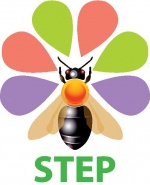 Pollination is crucial to providing food security with 84% of European crops benefitting, at least in part, from insect pollination and 78% of temperate wildflowers needing biotic pollination. An estimated ~10% of the total economic value of European agricultural output for human food amounted to ˆ22 billion in 2005 (ˆ14.2 for the EU) was dependent upon insect pollination. Pollination is crucial to providing food security with 84% of European crops benefitting, at least in part, from insect pollination and 78% of temperate wildflowers needing biotic pollination. An estimated ~10% of the total economic value of European agricultural output for human food amounted to ˆ22 billion in 2005 (ˆ14.2 for the EU) was dependent upon insect pollination.
However, due to a cocktail of environmental stressors some pollinator species are declining and and the pollination services they provide may be under threat
What can we do to mitigate pollinators decline and ensure sustainable future?
At the end of the project's 5 year research programme STEP is publishing the "Climatic Risk and Distribution Atlas of European Bumblebees". The atlas, published as a special issue of the open access journal BioRisk, breaks new ground in assessing the risks of climate change for European bumblebees. Climate change has been identified as one of the main threats to this group and the atlas provides the most comprehensive evaluation of the likely consequences this will have.
The authors gathered over one million bumblebee records from all over Europe. Based on these data, they modelled the current climatic niche for almost all European species (56 species) and projected future climatically suitable conditions using three climate change scenarios for the years 2050 and 2100. While under a moderate change scenario only two species are projected to be at the verge of extinction by 2100, 14 species are at particularly high risk under an intermediate change scenario. Under a more severe change scenario as many as 25 species are projected to lose almost all of their climatically suitable area. Strong mitigation strategies are therefore needed to preserve this important species group and to ensure the sustainable provision of pollination services, to which they considerably contribute.
Prof. Simon Potts, Coordinator of STEP: "Europe's pollinators face many challenges if they are to continue to support food production and maintain the flower diversity of our landscapes. The STEP project has generated a substantial body of knowledge on how to conserve pollinators, safeguard the pollination of crops and better understand how mitigate against threats".
###
Original Source
Rasmont P, Franzén M, Lecocq T, Harpke A, Roberts S, Biesmeijer K, Castro L, Cederberg B, Dvorak L, Fitzpatrick Ú, Gonseth Y, Haubruge E, Mahé G, Manino A, Michez D, Neumayer J, &Ostroke;degaard F, Paukkunen J, Pawlikowski T, Potts S, Reemer M, Settele J, Straka J, Schweiger O (2015) Climatic Risk and Distribution Atlas of European Bumblebees. BioRisk 10: 1-236. doi: 10.3897/biorisk.10.4749
|
